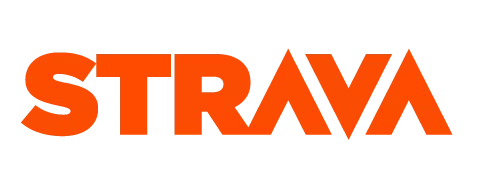Struggling with procrastination or maintaining motivation? Motivated for the things you LOVE doing but not so much for the things that you know NEED doing?
That’s me in a nutshell. I struggle when it comes to staying motivated and avoiding procrastination around the things I know I NEED to do to but don’t LOVE to do. Getting on top of these things is what really helps us make progress toward those big big goals in life.
Ever wonder why you feel motivated sometimes but not others? To me it’s always felt very mysterious. I’m always curious about how things work, but motivation always felt beyond understanding to me.
A recent podcast episode from Andrew Huberman gave me some real insight into some practical ways we can leverage our own biology to overcome procrastination and optimize effort
According to Andrew the key to breaking free from these obstacles might lie in understanding and managing dopamine, a neurotransmitter responsible for motivation, pleasure, and reward. In this blog post, we'll explore some strategies I learned from Andrew that should help you harness dopamine fluctuations to overcome procrastination and stay motivated even for those things you don’t like doing.
You can listen to the audio version of me talking through this post on the podcast or continue reading here
The Science of Dopamine
To be honest with you, I find the detail of science pretty boring, I love figuring out how things work in a practical sense but my eyes glaze over when things get to theoretical. This podcast episode really struck me as being practical and actional.
The first part of the episode went into a fair bit of detail about dopamine and what it does in the body. If you are interested in that extra detail, please listen to the episode. Actually I’d recommend listening anyway as the info at the start does help.
I’m not going to cover off any of the science based stuff, Andrew does that well. I’m just going to try and summarize that quickly and then go into the practical things that Andrew suggests you can do to make a real difference to the pursuits you go after in your life, whether they be fitness, relationship or business pursuits.
The Short Version
The “too long didn’t listen” about dopamine is that the feeling you get before you do something you’ve been looking forward to and the feeling you get when you’ve done something fun or rewarding has a lot to do with your dopamine levels.
Dopamine works in waves, you have a baseline level of dopamine, and you have peaks and troughs. The baseline is where you spend most of your time and when you feel super motivated or rewarded you are probably in peak mode. Then often after a peak you feel low, that’s when you are in the trough. That in itself explains a lot about how our motivation also goes in waves.
One thing about how dopamine works is that the steeper and higher the peak, the lower and steeper the trough will likely be.
The other important thing to know is that some activities that produce steep and tall dopamine peaks result in building up a type of resistance, where the activity itself over time becomes less effective at producing dopamine. These are typically the cheap and easy tactics like drug taking, social media binging and porn.
Other more difficult activities, like physical exercise, solving difficult problems and learning new skills typically result in less steep and less tall peaks but overtime do not become less effective in the same way as the aforementioned tactics.
Anticipation vs Reward and “Reward Prediction Error”
This framework was really interesting.
Sometimes I jump in my van to go surfing on a week day. I love it. I feel motivated and excited. I have expectations about how good the day is going to be. If the day meets or exceeds those expectations then I feel even better by the end of the day and come home stoked! If for some reason the day wasn’t as good as I expected then I come home feeling a little down. Even if it was an amazing day, if it wasn’t as amazing as expected it doesn’t feel good.
After the podcast now I know why!
Andrew describes this phenomenon as “Reward Prediction Error”
When you are anticipating something you enjoy doing, that good feeling is a rise in your dopamine levels. That is what gets you motivated to move and get out the door. Then if the activity matches or exceeds your expectations, you get another boost of dopamine, most likely reaching the peak. But if the activity was not as good or as fun as you expected then you can feel a little down, that’s your dopamine dropping down below your base line caused by “Reward Prediction Error”. The error is the difference between how good you expected something to be compared to how good it actually was. If you get a negative difference it doesn’t matter how good the activity actually was, it will feel like a let down.
Tools for Life
Ok let’s jump into the practical stuff now. How can we leverage this new found knowledge to increase our motivation and reduce our procrastination so we can really go after those things in life we want.
The first thing is tricks to maintain a high baseline level of dopamine. These are things we need to build into our everyday lives so our dopamine levels maintain a solid baseline. If we don’t have a solid baseline day to day then nothing else really matters. The next thing is the cheap and nasty tricks to avoid. These tricks feel good while we are doing them but long term will do more damage to our motivation and our achievements. And the last thing I’ll cover is some tricks Andrew shared in the podcast to get us out of procrastination in the moment.
Maintaining a High Baseline
Activities to Maintain High Baseline Dopamine Levels
A crucial aspect of managing dopamine is maintaining a high baseline level. To achieve this, prioritize self-care practices and implement these practical strategies:
- Get enough sleep: Aim for 7-9 hours of quality sleep each night to regulate dopamine levels and promote overall brain health. Establish a consistent sleep schedule, create a calming bedtime routine, and optimize your sleep environment by keeping it cool, dark, and quiet.
- Eat a balanced diet: Consume a diet rich in whole foods, including lean proteins, complex carbohydrates, healthy fats, fruits, and vegetables. Foods containing tyrosine, an amino acid that is a precursor to dopamine, can be particularly helpful. Examples include lean meats, fish, eggs, dairy, soy products, whole grains, and nuts.
- Exercise regularly: Engage in regular physical activity, such as brisk walking, jogging, swimming, or weightlifting. Exercise has been shown to increase dopamine levels and improve overall mental well-being. Aim for at least 150 minutes of moderate-intensity aerobic exercise or 75 minutes of vigorous-intensity aerobic exercise per week.
- Manage stress: Practice stress-reducing techniques like mindfulness meditation, deep breathing exercises, progressive muscle relaxation, or yoga. These practices can help balance dopamine levels and promote a more positive mindset.
- Stay socially connected: Spend time with friends, family, or join social groups to foster connections and experience positive social interactions. Social engagement can boost dopamine levels and improve overall mental health.
- Pursue hobbies and interests: Engage in activities you enjoy, such as playing a musical instrument, painting, or gardening. Pursuing hobbies and interests can provide a sense of accomplishment and stimulate dopamine production.
- Learn new skills: Tackling a complex task, like learning a musical instrument or a new language, requires effort and concentration, leading to a sense of accomplishment and dopamine release.
- Pursue discomfort and challenge yourself: Practice tolerating even minor discomforts, like delaying gratification, to build mental resilience can regulate dopamine levels. Confronting the fears, for example public speaking can cause anxiety and discomfort, but successfully completing the task can lead to a dopamine boost and increased confidence.
By maintaining a high baseline dopamine level through these strategies, you'll be better equipped to stay motivated and focused on your tasks day to day.
Avoid Quick and Easy Dopamine Boosts
While it's essential to maintain a high baseline dopamine level, it's also important to avoid relying on cheap and easy sources of dopamine. These sources may provide a temporary boost but can have detrimental effects on your overall dopamine levels and mental health in the long run. Common examples of these sources include:
- Alcohol and drugs: While alcohol and drugs may temporarily increase dopamine levels, they can lead to addiction, tolerance, and dependence. Over time, this may cause a decrease in baseline dopamine levels and make it more challenging to feel motivated and focused on everyday tasks.
- Pornography: Excessive consumption of pornography can lead to a constant need for novelty and stimulation, which may result in a decreased sensitivity to dopamine. This can negatively impact motivation, focus, and satisfaction in other areas of life.
- Social media: Constantly seeking validation through likes, comments, and shares on social media can create a dopamine-driven feedback loop that may interfere with healthy dopamine regulation. Limiting social media usage and focusing on meaningful social interactions can help maintain a healthy dopamine balance.
- Junk food: Processed junk foods high in sugar and other nasties can trigger dopamine release, leading to cravings and overeating. Consuming a balanced diet rich in whole foods will not only support overall health but also help maintain stable dopamine levels.
To ensure long-term dopamine regulation and overall mental well-being, it's crucial to avoid these cheap and easy dopamine sources. Instead, focus on sustainable practices that promote a healthy baseline dopamine level and encourage motivation, focus, and satisfaction in life.
Using Dopamine to Break out of Procrastination
These are the really simple but powerful things we can do to break us out of those moments where we don’t feel motivated to do those important things that need doing.
It’s very common for people to try and get out of these moments by doing other non-essential tasks like cleaning up, or making a snack, or packing your gym bag for the following day. In the moment we say to ourselves “well at least I’m achieving something”. Other times we just wait for our motivation to come back to us, most of the time this tactic doesn’t work and often we don’t then get back on task until we are forced to either by a deadline or some sort of external influence where we no longer have any other choice.
Andrew suggests that both of those methods are ineffective and it’s much more valuable to instead force ourselves into doing small but difficult tasks for a boost of dopamine to get us back on the important jobs.
In the podcast he refers to these as being “painful”. He is very clear though he does not mean inflicting pain or physical harm on ourselves. He means things that make us feel extremely uncomfortable.
Engage in “Painful” and “Effortful” Activities
Painful activities can help break the cycle of procrastination and low motivation by stimulating the release of dopamine. By engaging in activities that cause discomfort, you push your body and mind to adapt, helping to overcome mental barriers and increase motivation. Things that make us recoil a little when we think about them are the best things to go after, it’s a sign that we know they will be uncomfortable so are more likely to be effective.
Below are some examples Andrew uses, but I’ve added a few of my own.
Examples of painful activities include:
- Cold showers or cold immersion: This method causes significant discomfort, releasing dopamine and pushing you out of the procrastination trough.
- High-intensity interval training: Incorporating bursts of intense exercise followed by brief recovery periods can challenge your physical limits and trigger dopamine release.
- Social interaction: Confronting the fear of interacting with strangers can cause anxiety and discomfort, but successfully completing the task can lead to a dopamine boost and increased confidence. Smiling or saying hi to people you don’t know while out in public can really quickly trigger feelings of accomplishment leading to that feeling of confidence.
- Voluntary discomfort: Practice tolerating minor discomforts, like delaying gratification, to build mental resilience and regulate dopamine levels.
Create a short list of your own five painful or effortful activities to employ when feeling unmotivated or procrastinating. By engaging in these activities, you can train your mind to appreciate the process of hard work and the rewards it brings. Then you can jump back into the work that needs doing. They need to be simple enough and practical enough things that you can do during your normal day, otherwise you just won’t do them.
So, in a nutshell, mastering dopamine management is all about finding the right balance. Keep up with healthy habits to maintain a good baseline dopamine level, avoid quick fixes that mess with your ability to regulate dopamine long term, and use challenging activities to break free from procrastination. LIke almost everything, it's a process, and it might take some time to get it right. But with determination and consistency, you'll be well-equipped to tackle your goals and stay motivated in the long run. After all, understanding your own biology can be a powerful tool in helping you overcome obstacles and make meaningful progress in life.
A big thank you to Andrew Huberman for sharing his insights on dopamine management in his podcast episode "Leverage Dopamine to Overcome Procrastination & Optimize Effort" from the Huberman Lab Podcast. If you haven't already, definitely give it a listen. It's packed with valuable information and practical tips to help you make the most of your motivation and conquer procrastination. Let's put this newfound knowledge into action and start making some serious progress in our lives! Happy listening, and here's to overcoming procrastination and boosting motivation!
Take our Free "Authentic" Marketing Course for Coaches
Designed for endurance sport coaches. Marketing doesn't need to be pushy. The best marketing simply creates a win-win relationship between you and your customers. Take the simple 6 part course to learn more.













